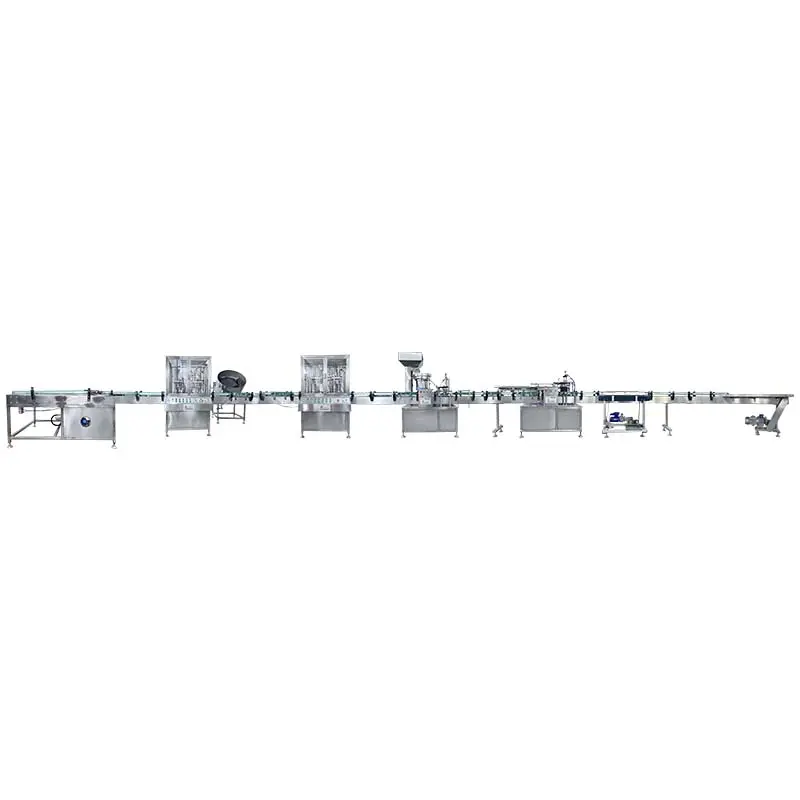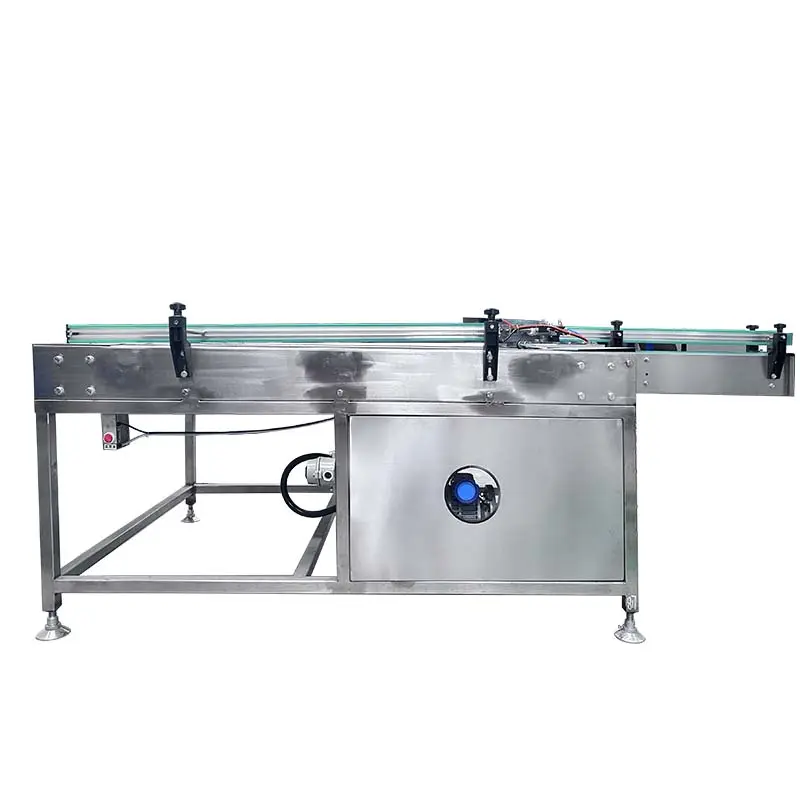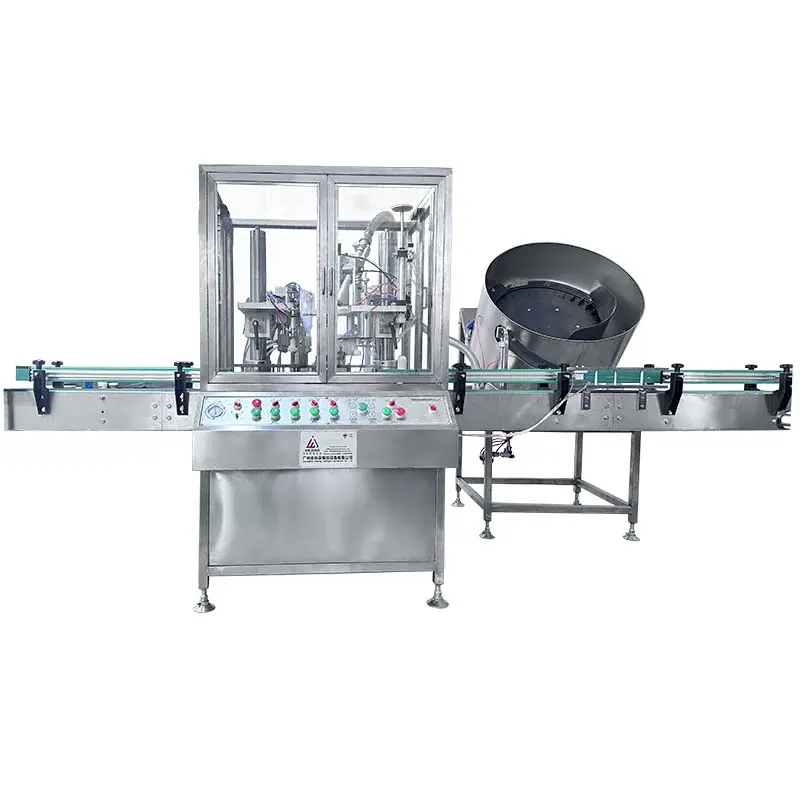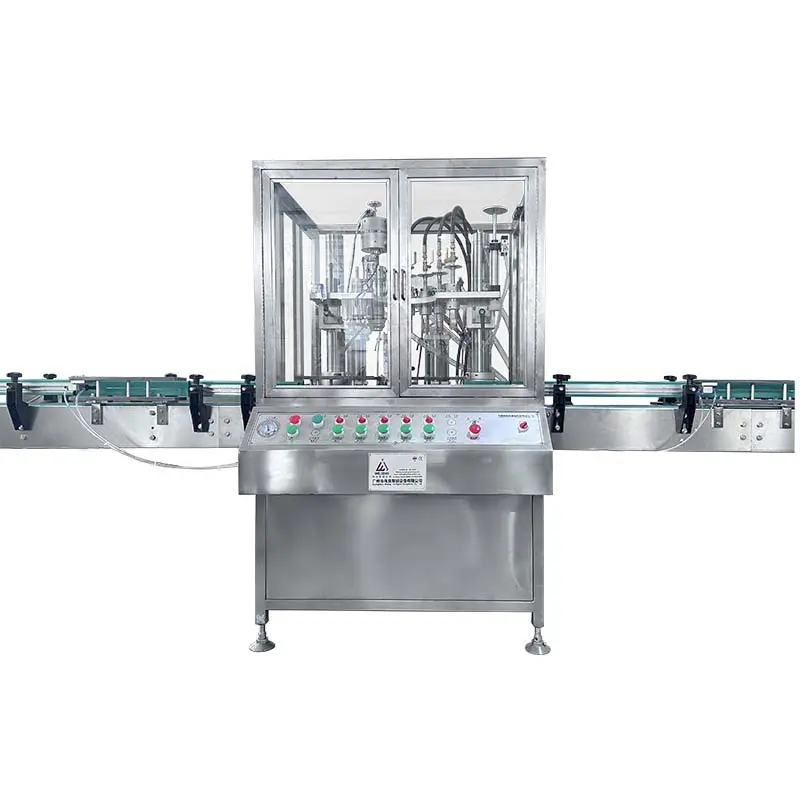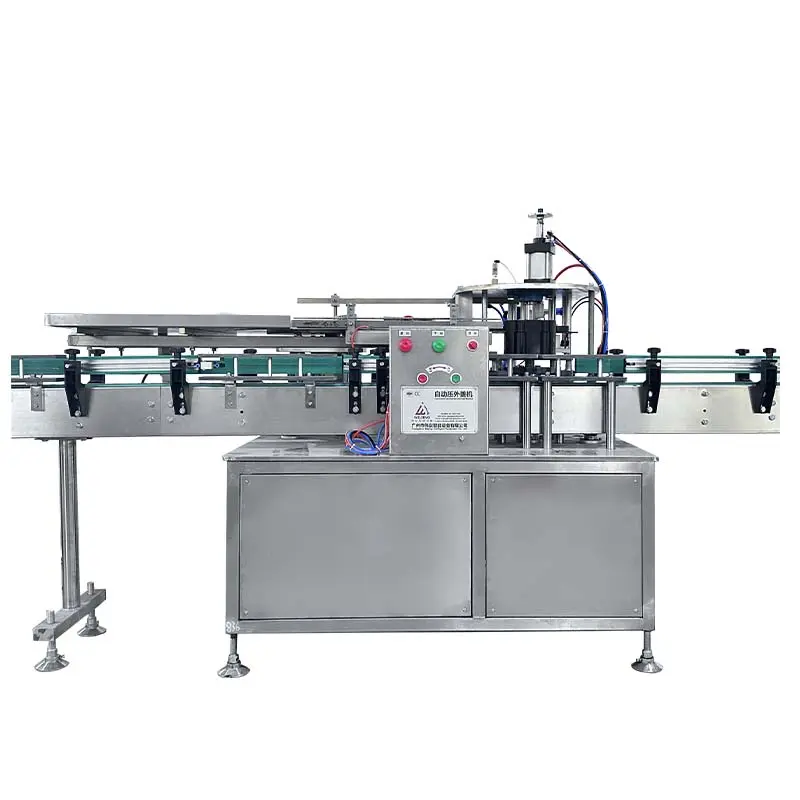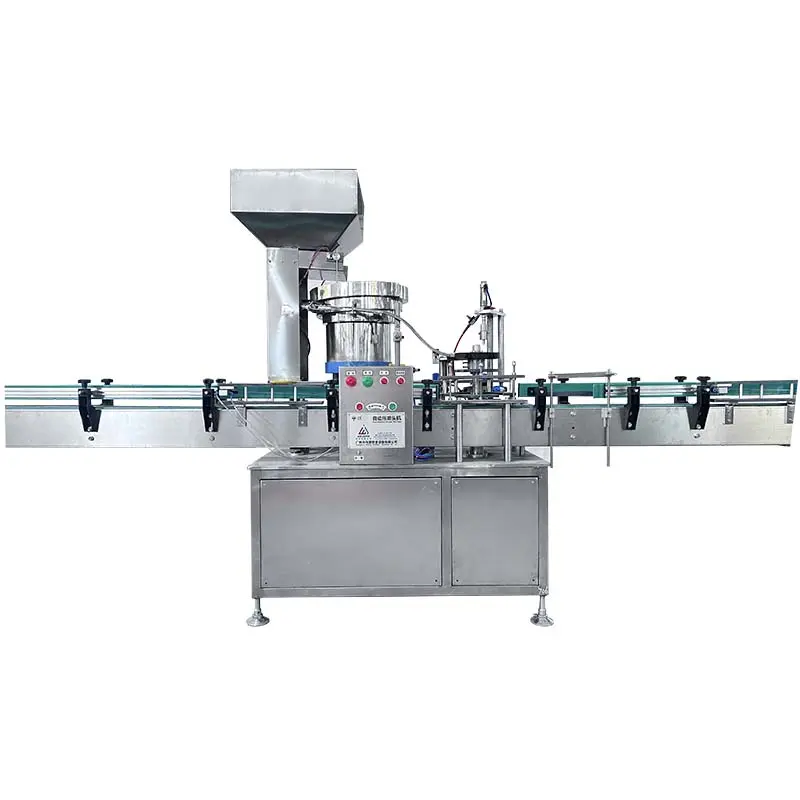QGJ70 Full Automatic Aerosol Production Line
ProductProduct Parameters
Technical Parameter |
Description |
Filling capacity (cans/min) |
60-70 |
Liquid filling volume (ml) |
10-1200( can be customized) |
Gas filling volume (ml) |
10-1200( can be customized) |
Filling heads |
4 heads |
Filling accuracy |
≤±1% |
Applicable cans diameter (mm) |
35 - 70( can be customized) |
Applicable cans height (mm) |
80 - 300( can be customized) |
Applicable valve |
1 inch |
Working pressure (Mpa) |
0.6 - 0.8 |
Max gas consumption (m3/min) |
5 |
Power (KW) |
7.5 |
Material |
SS304 ( some parts can be SS316) |
WORKING PROGRESS

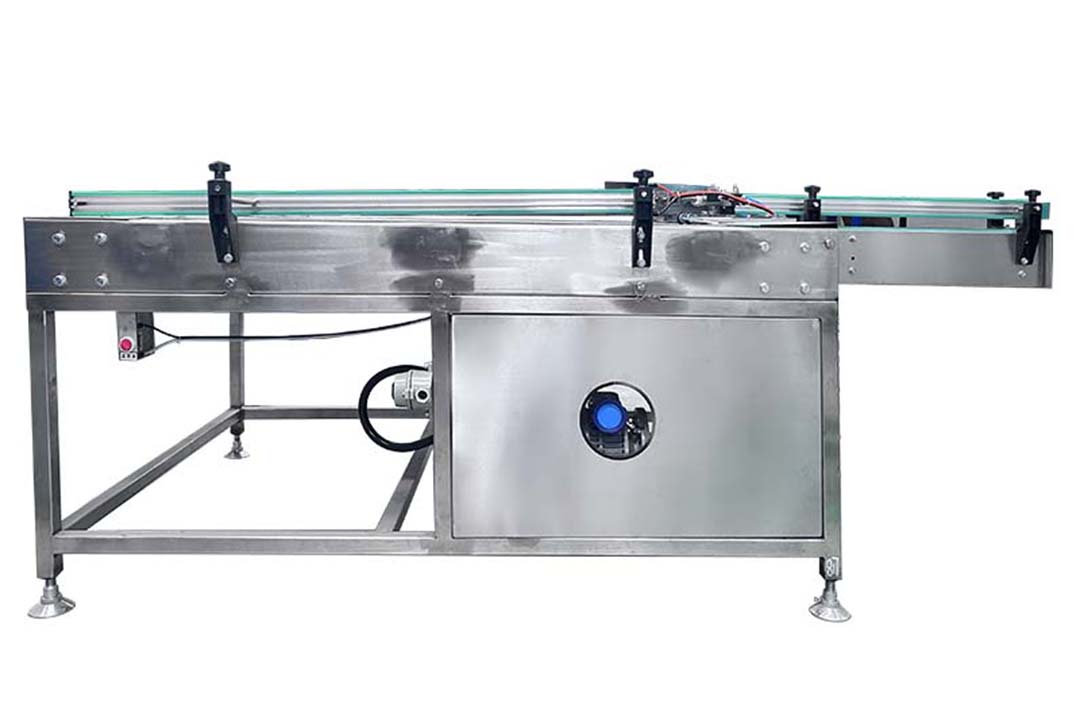
01
Can Feeding Machine
7 Jan 2019
Organize the disorganized empty bottles into an orderly state so that subsequent filling operations can proceed smoothly.
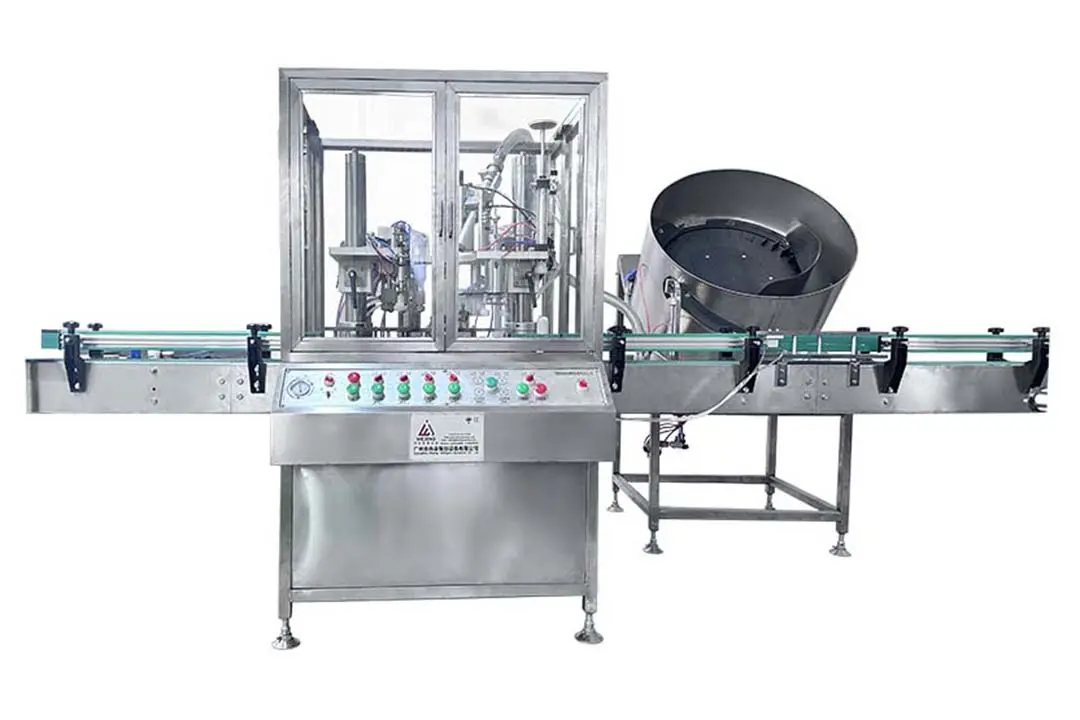
02
Liquid Filling Machine & Valve Insert Machine
7 Jan 2019
The Liquid Filling Machine is responsible for filling precise amounts of liquid material into empty bottles. It uses high-precision measuring devices and filling heads to ensure accurate and consistent filling volume for each bottle. Valve Insert Machine installs the aerosol valve onto the filled bottle. Valves are key components of aerosol products, and the valve mounting machine can quickly and accurately install the valve at the bottle mouth, ensuring the sealing and secure installation of the valve, providing assurance for subsequent inflation and use.
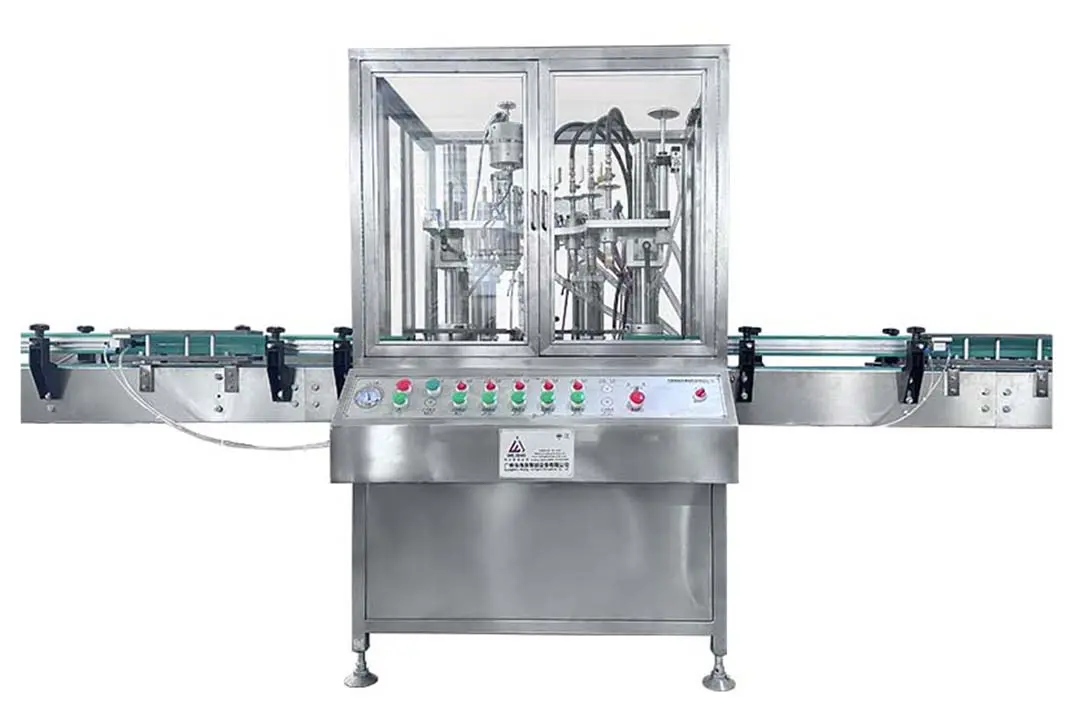
01
Crimping & Gas Filling
7 Jan 2019
Seal the bottles with installed valves to further enhance their sealing and prevent liquid and gas leaks. Fill a sealed bottle with a specific gas, which is usually used as a propellant to spray the liquid inside the bottle in a mist form.
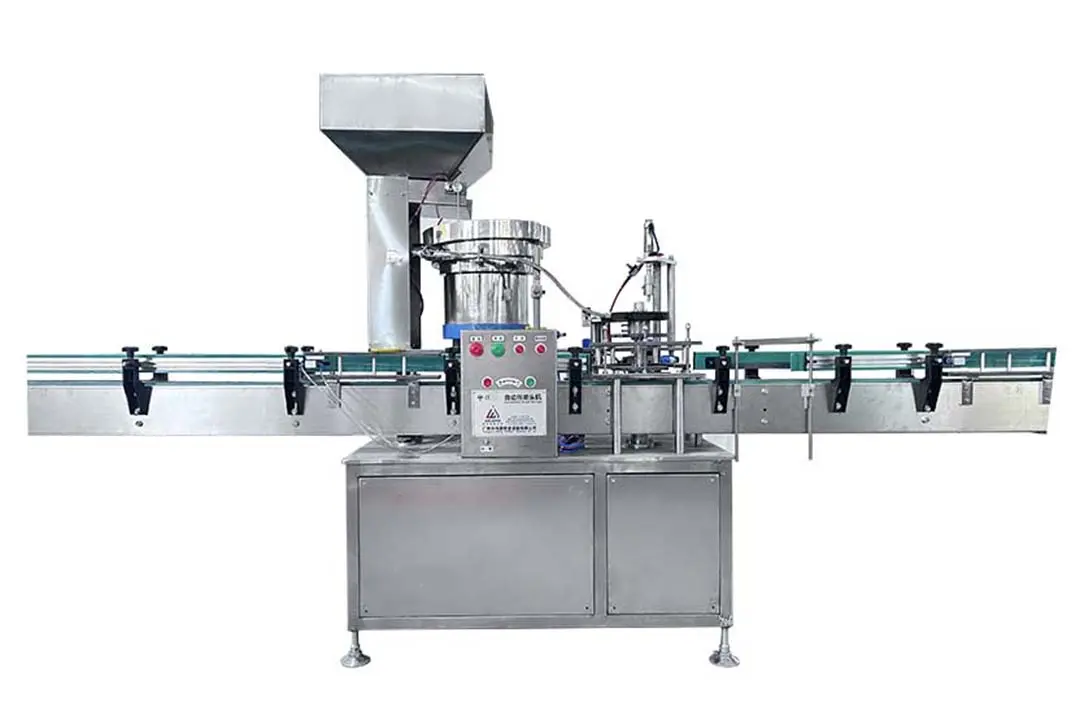
02
Auto Actuator Fixed Machine
7 Jan 2019
Install the nozzle onto the valve of the bottle, making it convenient for users to spray liquid in a mist.
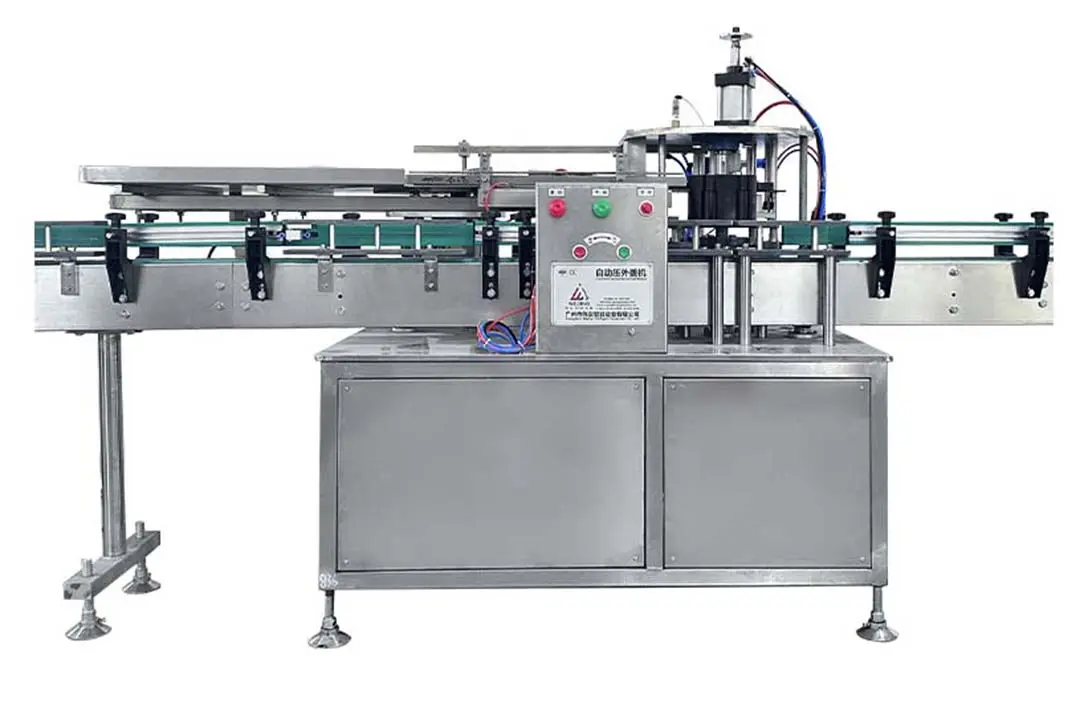
01
Capping Machine
7 Jan 2019
Adding an outer cover to aerosol products serves to protect the valve, nozzle, and bottle body.
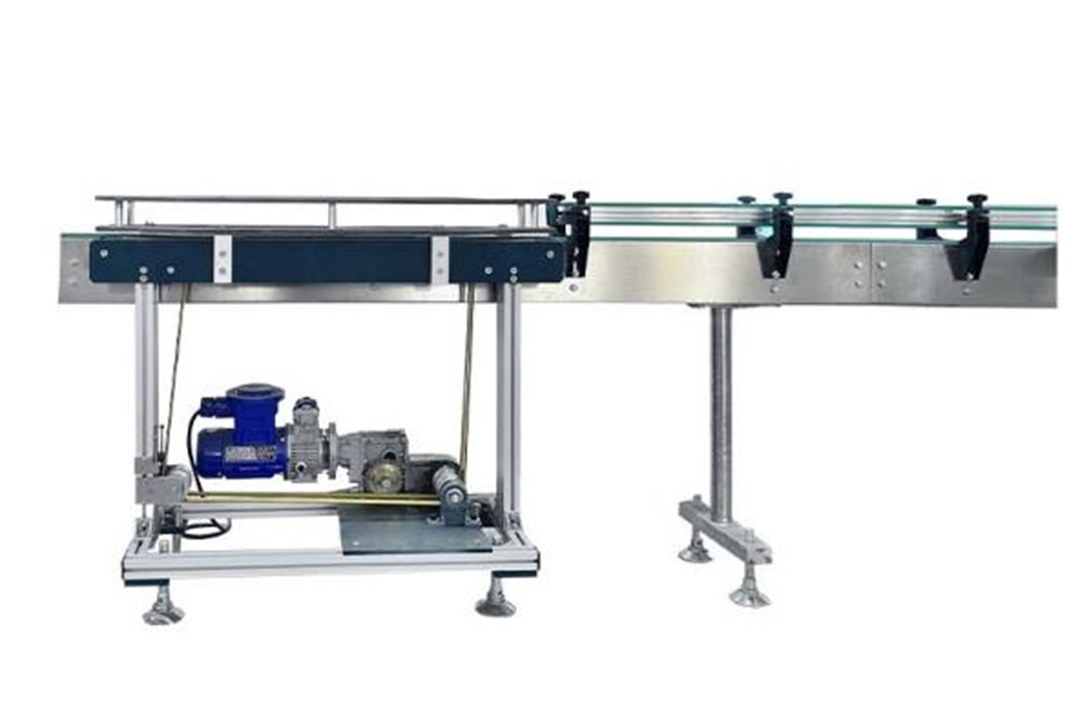
02
Inkjet Belt
7 Jan 2019
Spray printing of production date, batch number, expiration date, and other information on the bottle or packaging of aerosol products to facilitate product traceability and management.
High Degree of Automation in Production
The entire filling line is capable of automatically carrying out a series of procedures including bottle sorting, filling, valve installation, sealing, inflation, weighing, water inspection, nozzle fastening, and cap fastening. In comparison to traditional semi-automatic or manual filling techniques, the production efficiency can be substantially enhanced, thus fulfilling the requirements of large-scale production.
Adaptability to Multiple Product Specifications
It can accommodate aerosol containers and valves of varying specifications, shapes, and sizes. Through simple adjustments and replacements of molds and other components, the filling and production of diverse products can be achieved. This meets the varied production requirements of customers and decreases the equipment investment and production conversion costs for enterprises.
Online Monitoring
It is furnished with various online detection devices such as fiber optic detectors, weighing sensors, and water leakage detection devices. These can detect in real-time the position of bottles, the accuracy of the filling amount, the tightness of the sealing, and the presence of leaks during the production process.
Application
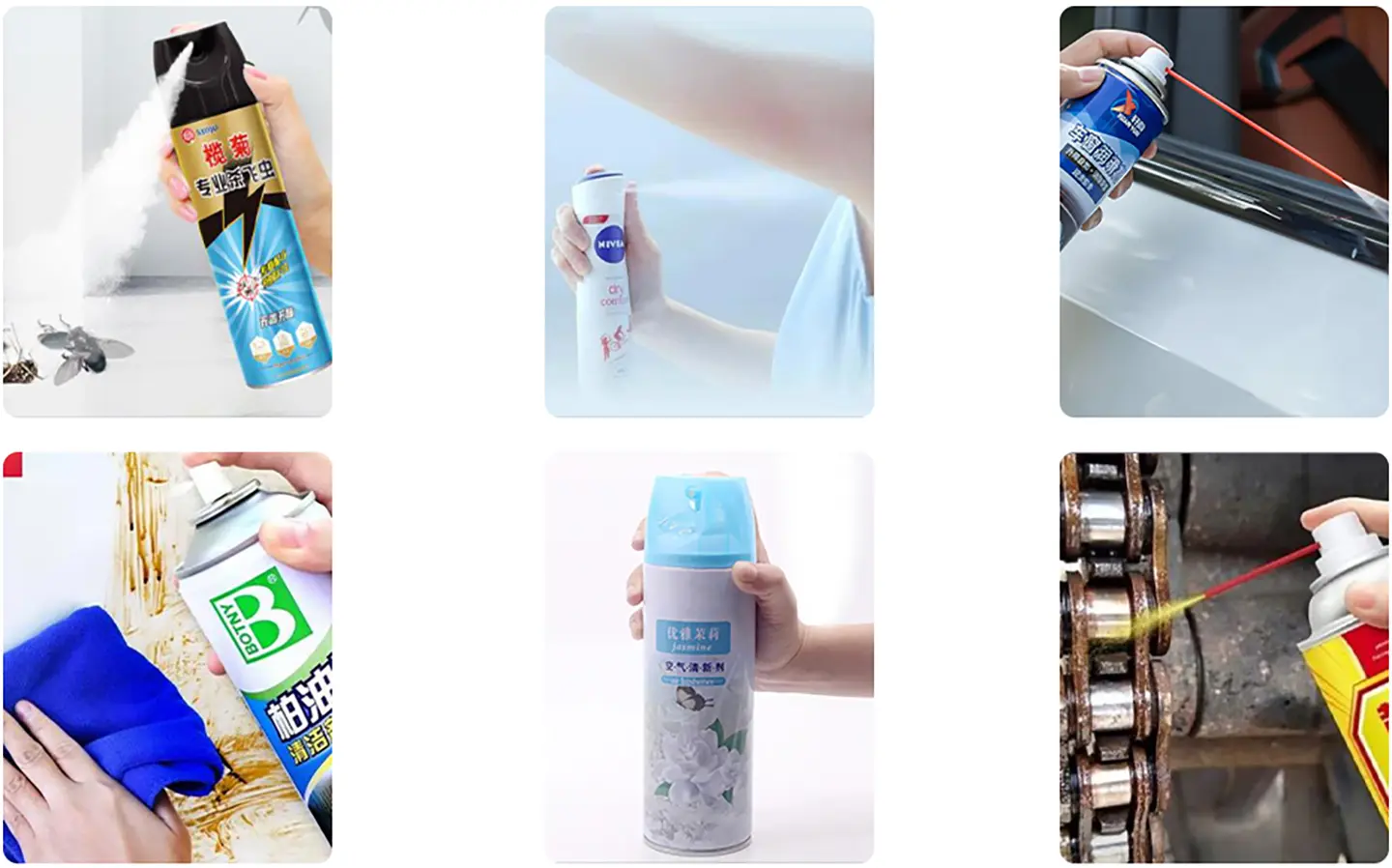
1. Daily chemical industry: used to produce air freshener, pesticide, hair spray, mousse, shaving foam and other products.
2. Pharmaceutical industry: it can be filled with various medical aerosols, such as inhalers for asthma treatment, anti-inflammatory and analgesic aerosols for external use, oral spray, etc.
3. Food industry: suitable for filling food aerosol products, such as cream foaming agent, cooking spray oil, etc.
4. Automotive supplies industry: can be used to produce carburetor cleaning agents, surface wax, tire inflation agents, automotive paint and other products.




